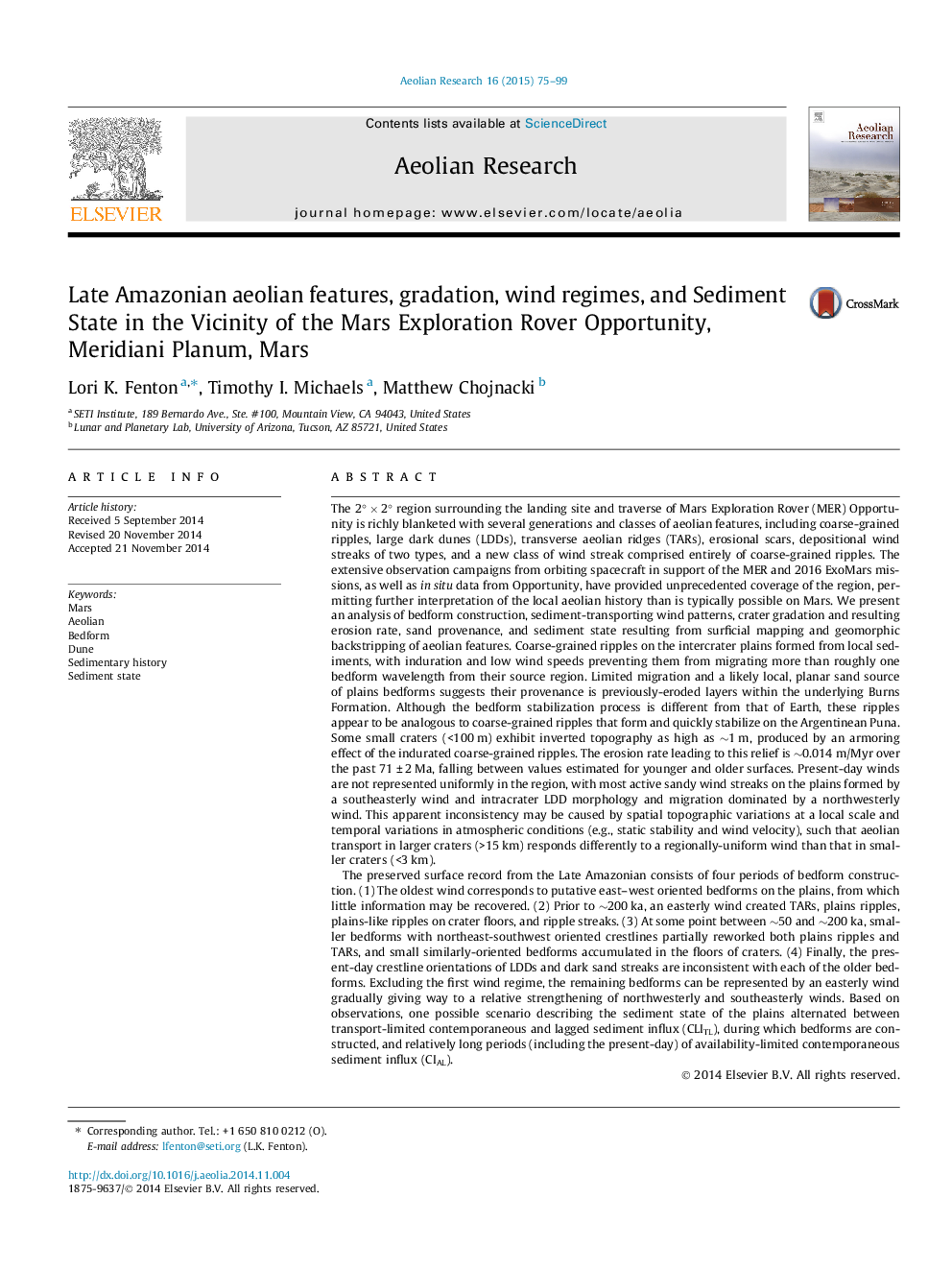| Article ID | Journal | Published Year | Pages | File Type |
|---|---|---|---|---|
| 6426324 | Aeolian Research | 2015 | 25 Pages |
Abstract
The preserved surface record from the Late Amazonian consists of four periods of bedform construction. (1) The oldest wind corresponds to putative east-west oriented bedforms on the plains, from which little information may be recovered. (2) Prior to â¼200Â ka, an easterly wind created TARs, plains ripples, plains-like ripples on crater floors, and ripple streaks. (3) At some point between â¼50 and â¼200Â ka, smaller bedforms with northeast-southwest oriented crestlines partially reworked both plains ripples and TARs, and small similarly-oriented bedforms accumulated in the floors of craters. (4) Finally, the present-day crestline orientations of LDDs and dark sand streaks are inconsistent with each of the older bedforms. Excluding the first wind regime, the remaining bedforms can be represented by an easterly wind gradually giving way to a relative strengthening of northwesterly and southeasterly winds. Based on observations, one possible scenario describing the sediment state of the plains alternated between transport-limited contemporaneous and lagged sediment influx (CLITL), during which bedforms are constructed, and relatively long periods (including the present-day) of availability-limited contemporaneous sediment influx (CIAL).
Related Topics
Physical Sciences and Engineering
Earth and Planetary Sciences
Atmospheric Science
Authors
Lori K. Fenton, Timothy I. Michaels, Matthew Chojnacki,
